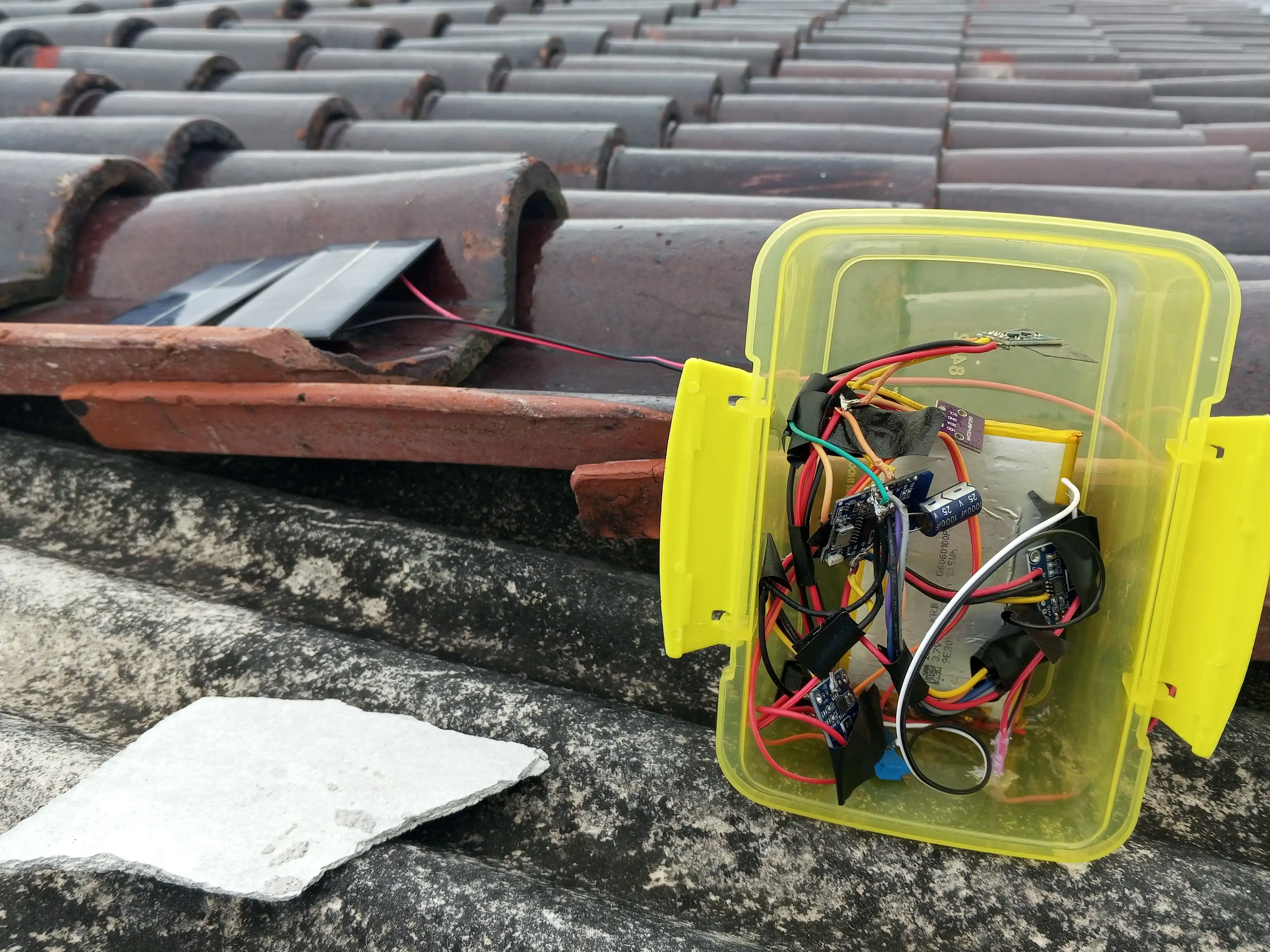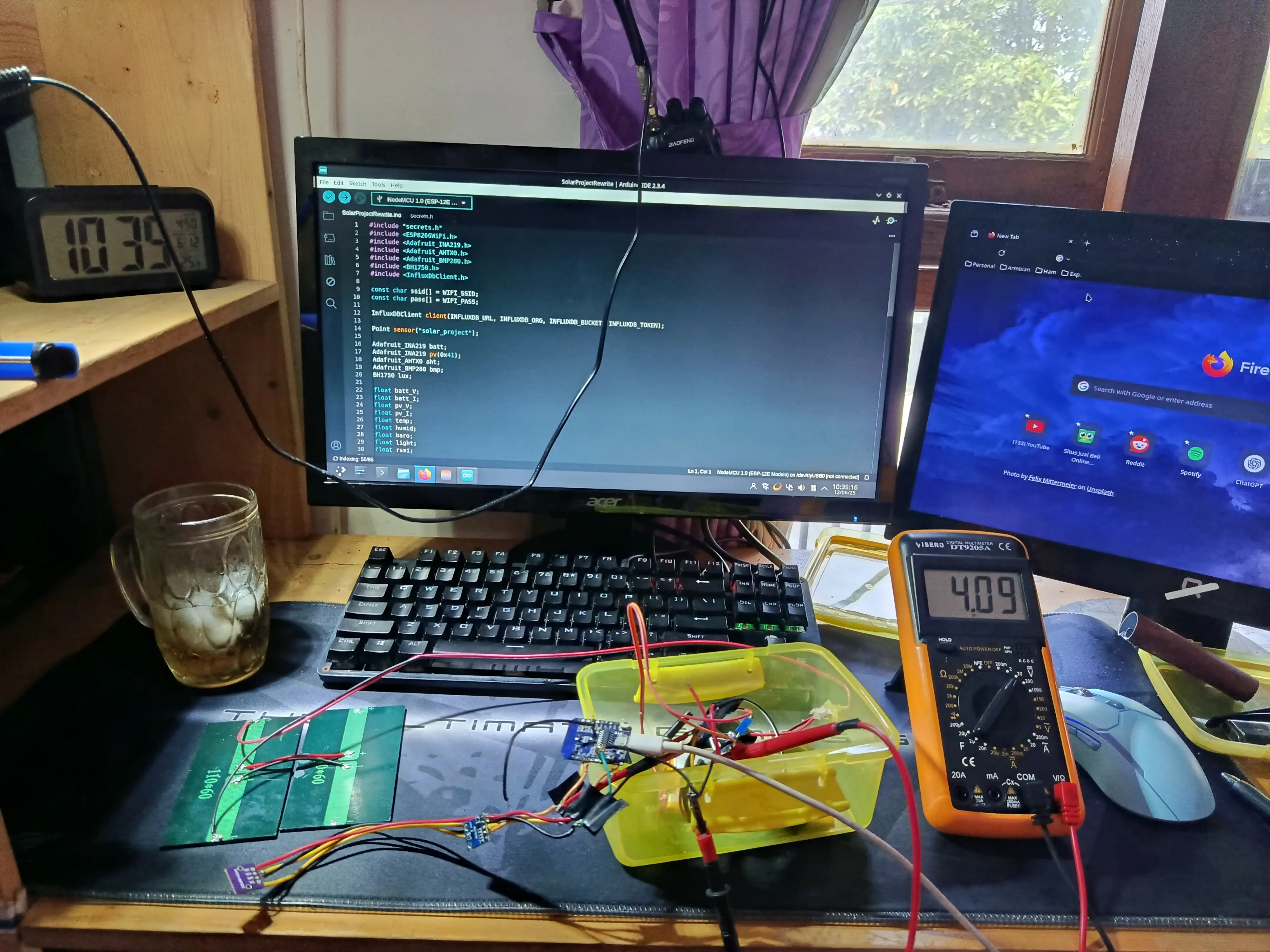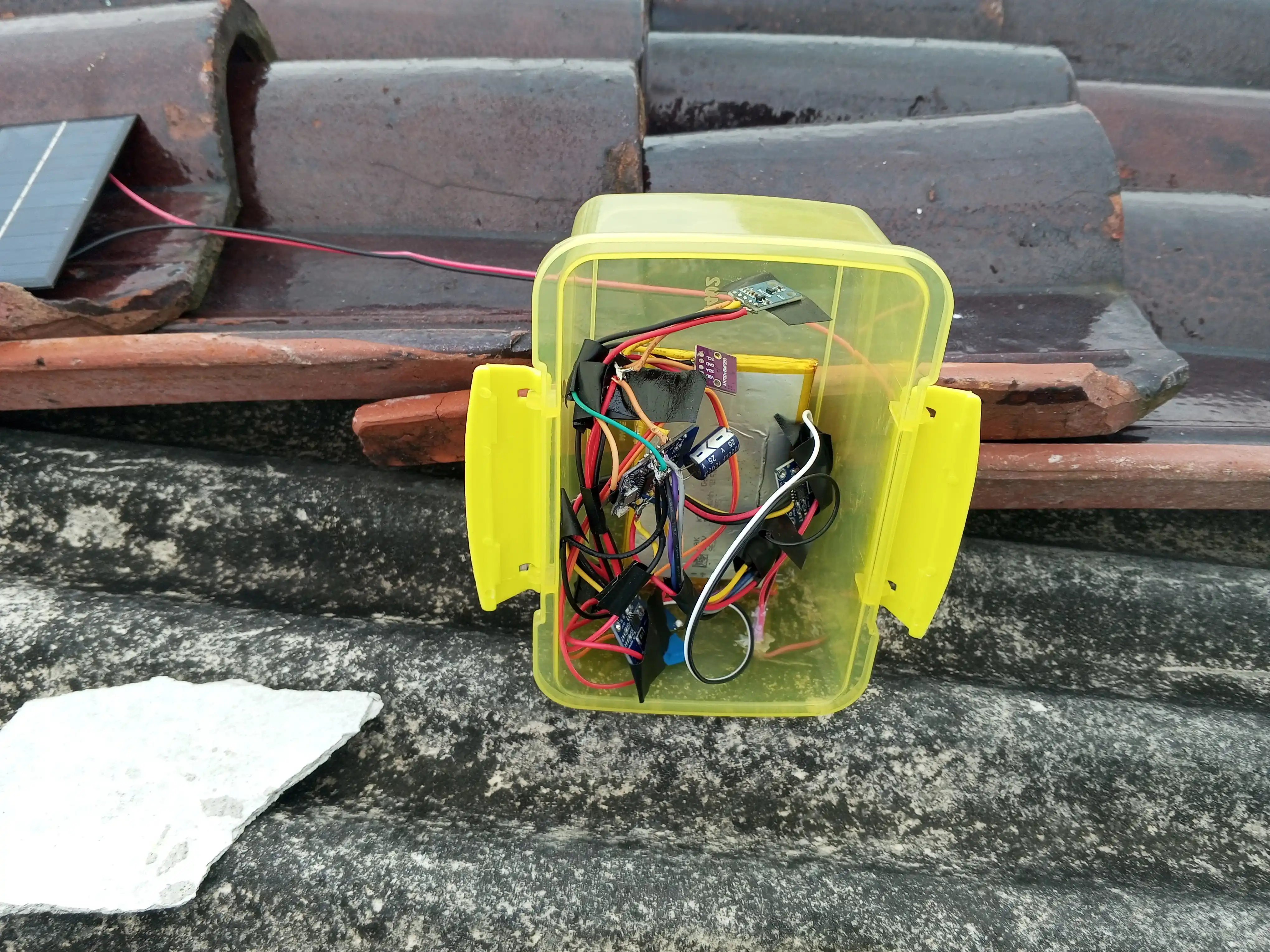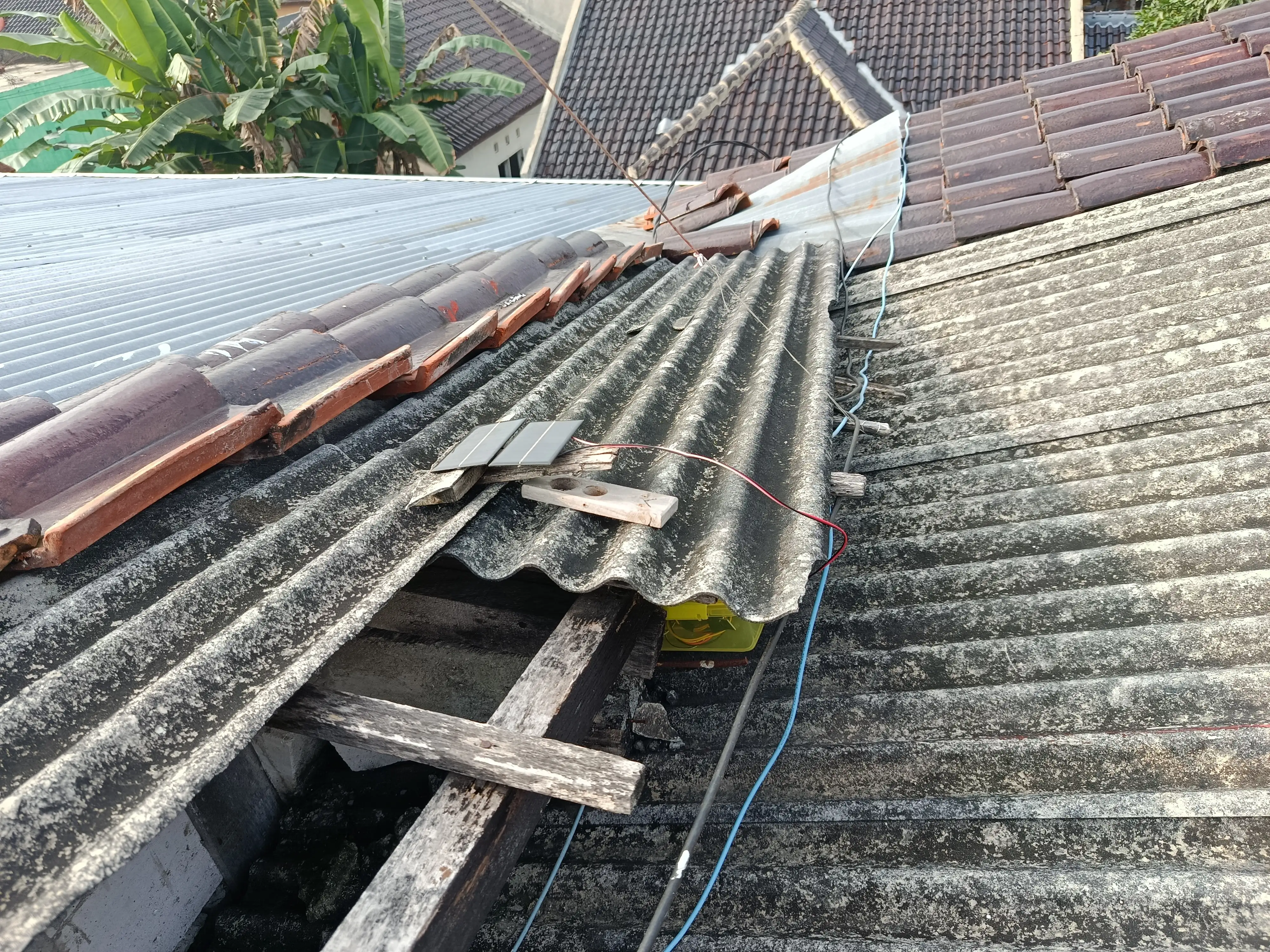My Main Projects
1. Weather station with ESP8266
It was a simple weather station really, I just use an ESP8266 with DHT22 and BMP280. Nothing special just connected it to my local InfluxDB server via Wi-Fi and thats it. You can see the data presented using Grafana here: https://wx.yg2bxp.my.id
2. Remote solar powered weather station
This one is more complicated as it demands compact form factor, advance power management, and a way to connect it to the internet.
The goal of this project is to allow me to learn and evaluate how to properly build a solar-powered device, as it is currently in the evaluation phase (with much work to be done) and is not yet ready for field use.

With that aside I'm using ESP8266 my preferred microcontroller for this project tho admittedly ESP32 would be better for this because for some odd reason I just can't reliably wake the ESP8266 from deep sleep, I've tried different development board but met with the same result.
As for the sensors I'm using there are:
- 2x INA219 (Measures voltage and current draw)
- AHT20+BMP280 (Temperature and humidity + barometric pressure)
- BH1750 (Ambient light level NOT the light level received by the solar panel itself)
I have problem with BH1750 pulling the I2C bus low but restarting it seems to fix the issue, well until you turn it off and on again. IDK why

Anyway, to support the microcontroller + all of that sensors working together it is equipped with 2 solar panel rated at 200 milliampere at ~6 Volts thats about 1 Watt peak each, at least thats the claim on the field peak current draw is about 150mA after that it decrease steadly as the battery charges. it isn't a bad thing it's a good thing that meant I can use only one solar panel and it would be enough.
Talking about battery this project use one random battery I obtain from a broken powerbank, I belive it's a 5000mAh 3.7V LiPo. I would say it's a bit oversized but it works. Also don't forget that I use HT7333 LDO for 3.3V regulation on the battery output for the MCU.
Last but not least is how to connect it to the internet, might seems easy at first but when you think about connecting two devices that's 8+ KM apart your option just get limited to just a handful.
1. GSM / GPRS
The simplest to implement, with large network coverage, but with everything in life it comes with downsides, the big one being I need to pay monthly subscription sure it isn't much but I still didn't like it, not to mention 2G networks getting shutdown AND IMEI regulation stuff in Indonesia.
Not worth it, not future proof. Sure there's 4G but same problem.
2. LoRa (Long Range)
My preference, it is doable but I think it will be impractical. But if everything this is the best way to transmit data long range in my opinion, sure it is costly upfront but not having to pay monthly subscription quickly pay itself.
Would do if I have budget and time, right now it is already over budget.
3. APRS (amateur radio packet system)?
There is nothing stopping me from making it APRS capable, would like to do if I have the oportunity.
So what did I ended up choosing? NRF24L01+, Why? Because of current draw NRF24L01+ takes ~3 times less current than Wi-Fi on ESP8266 would, it's also cheap so why not.
So that it I don't have anything to say anymore, I hope this overview is not that long or complicated.
Grafana dashboard can be found at: https://sp.yg2bxp.my.id



My Side Projects
- Forwarding Data from InfluxDB to APRS-IS Network using Python
- This website
- And many other things
This page is still under construction

Please wait for further updates!